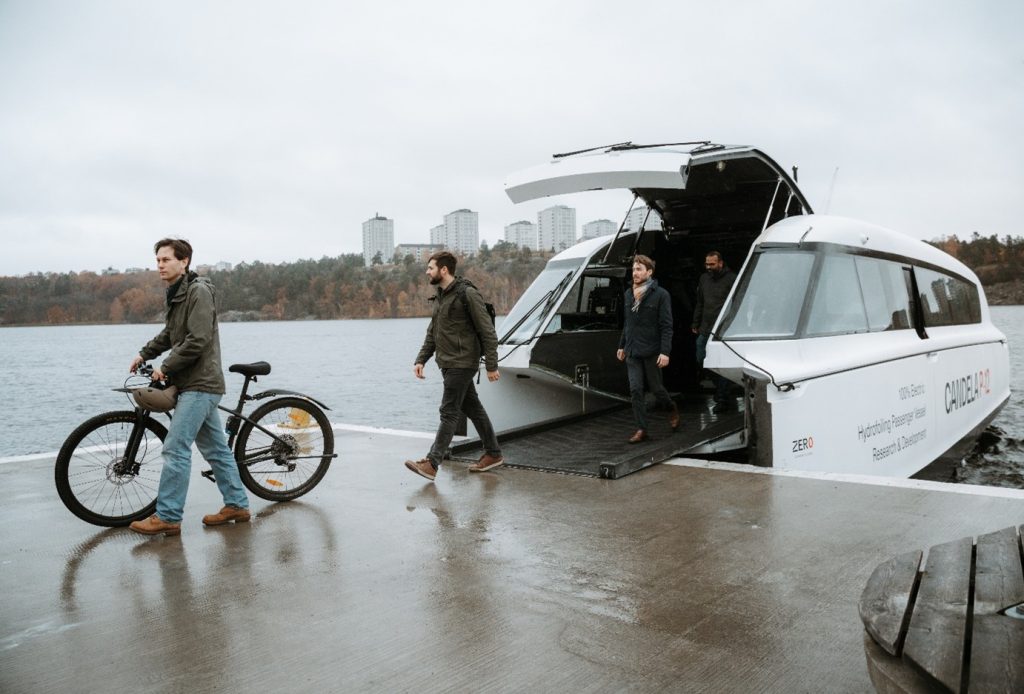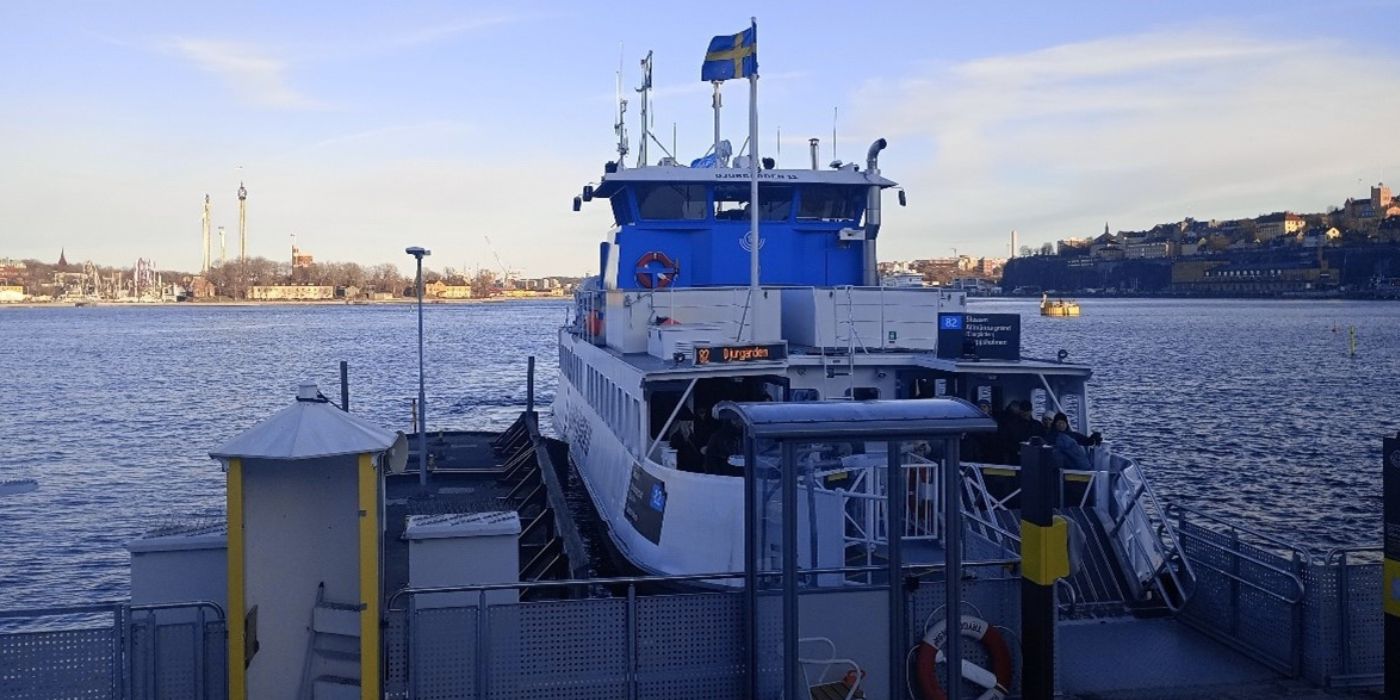In Stockholm, the management of public transport falls under the jurisdiction of the Stockholm Region, overseeing various aspects of regional governance, including healthcare and transportation.
Under this umbrella, several brands are associated with various modes of public transportation ensuring seamless operation of a comprehensive transit network in the Stockholm region. Storstockholms Lokaltrafik (SL) operates key urban waterborne transit lines such as 80, 82, and 89, and plans the development of additional routes in the future. These services are essential for connecting the diverse urban regions within the Stockholm area, including the islands of Lidingö, Djurgården, and Tappström. Notably, Line 80 was integrated into SL’s transport service in 2010 after being taken over from Waxholmsbolaget, marking a significant milestone in the coordination of urban water transportation within Stockholm.
Meanwhile, the test pilot of integrating the Candela P12, an innovative hydrofoil-based passenger ship, into Stockholm’s existing boat lines represents a significant advancement in urban water transportation. With its ability to minimise energy consumption, reduce operational costs, and offer higher speeds, the Candela P12 addresses key challenges faced by traditional passenger ships. This integration reflects Stockholm’s commitment to embracing innovative solutions to enhance urban mobility and meet the evolving demands of its residents and visitors.
Some interesting key facts:
| Name of service | Stockholm Passenger Transport |
| Operator | Rederi AB Ballerina (line 80), Djurgårdens Färjetrafik AB (line 82), Blidösundsbolaget AB (line 89) on behalf of Storstockholms Lokaltrafik (SL) |
| Market Segment | Passenger Transport |
| Region | Remote Waterways Stockholm |
| Launch year | SL: 2010, Candela 2014 |
| Barge Capacity | SL: most vessels 340 passengers but up to 500, Candela P12: 30 |
| Fleet Size | 20 vessels on SL-lines (4 owned by Waxholmsbolaget) |
| Propulsion | Mixed (mostly Diesel or HVO), one electric, Candela P12 is electric |
| Crew | SL: 2, Candela P12: 1 |
| Waterway infrastructure | 25 piers, 2 terminals, waterways can be iced in Winter |
| Service frequency | 3 Lines (2 more planned) |
| Transport volume | 5 Mio Passengers p. year for SL boat lines |

Some more insights about the service
Stockholm, with its archipelago and many small islands, makes waterborne passenger transport a necessity in many places. This is used by 1.5 million passengers every year. In addition to ferries to more distant islands in the Stockholm archipelago, there are also urban routes that are operated on behalf of SL, who also operates underground trains, commuter trains, trams and buses and transports 800,000 passengers every day.
The existing urban waterborne services operated by passenger ships cover lines 80, 82 and 89, which are used by around 5 million passengers per year. In 2023, 2.3 million passengers used line 80. Another 2.3 million passengers used line 82, which mainly commutes between Slussen, Skeppsholmen and Djurgården with the Gröna Lund Park, thus transporting many tourists and leisure passengers. 150,000 passengers are transported on Line 89 per year, which travels further inland and has many leisure passengers on board.
The capacity utilisation of the ships varies greatly in winter and summer. For example, capacity utilisation varies on Line 89, where more than 30,000 passengers use the ferry in summer months and fewer than 10,000 passengers use the ferry service in winter months. From 2024, a test phase of the Candela P12 in parallel service on route 89 will examine the possibilities offered by hydrofoil technology.
The Candela P12 offers space for 30 passengers and, thanks to hydrofoil technology, manages to reduce energy consumption and therefore also reduces operating costs. The relatively small size of the vessel was selected to optimise passenger capacity . A fleet of 3 Candela P12 vessels could be put into traffic and replace a vessel with a capacity of 200 passengers.

Lessons learned and roll-out-potential
The analysis of water passenger transport services in Stockholm provides valuable insights into the potential and challenges of this type of transport service. Waterborne passenger transport services are not only essential to connect the islands in the archipelago, but also play an important role in urban transport and contribute to making the city attractive. Both leisure passengers and commuters benefit from this transport service.
An important success factor is the integration of ferry services into the overall public transport network. In Stockholm, ferry services are closely linked to other public transport modes such as buses and trains within the public transport network, providing passengers with seamless travel options and facilitating the use of waterborne transport.
Another success factor is transparent and competitive tendering procedures for ferry service operators, which are the base for sustainable business models and in which environmental and service standards are set. Municipalities are key actors as they determine the service level and financing as well as environmental and service quality standards.
These procedures allow different companies to be involved, which increases the diversity of services and promotes competition. The use of ferry lines for touristic and leisure trips is common practice for ferry services. This adds another value to those services and is also relevant in Stockholm. At the same time touristic and leisure trips contribute to seasonal fluctuations in demand, which can lead to temporary overcrowding. This is one challenge for passenger services. Adapting services to these fluctuations requires flexibility and efficient utilisation of resources.
The introduction of innovative technologies such as hydrofoil-based vessels like the Candela P12 offers great potential to increase the efficiency and attractiveness of waterborne passenger transport. This technology enables a significant reduction in energy consumption and operating costs as well as faster passenger transport.
At the same time, the smaller scale allows for a more flexible schedule, allowing the service to adapt to transport demands more easily and therefore reducing underutilised capacities. This could help to make waterborne passenger transport more efficient and attractive not only in Stockholm but also in other cities and open up new areas of application. With its pilot project, Stockholm can become a pioneer of a future new development in how to operate waterborne passenger services.
